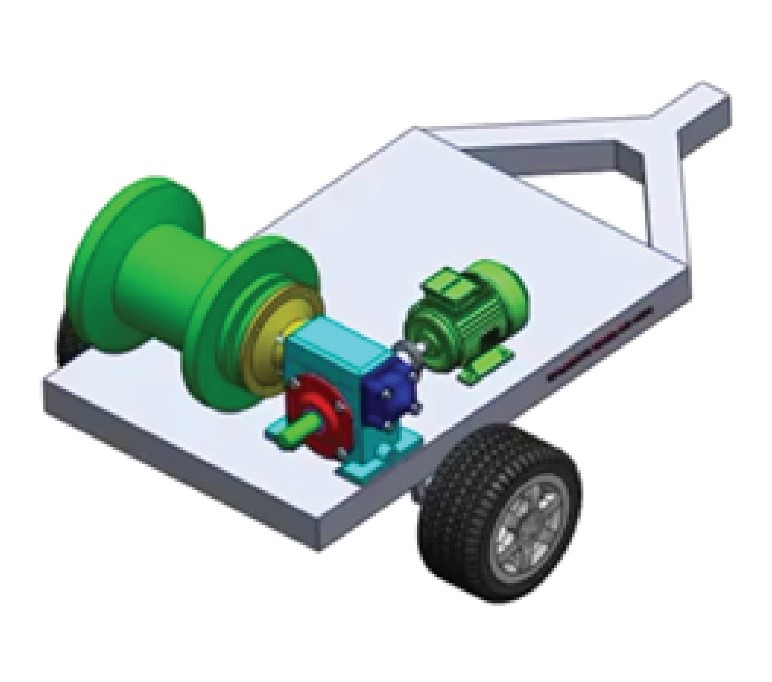Selection of materials in the design process.
##plugins.themes.bootstrap3.article.main##
Abstract
The selection of materials in the Design process has a great influence on its quality, however, it was found that this aspect has not been investigated in depth in the ISDi. Due to its importance and impact on the quality of a good design, methodologies that guide how to make the selection of the material based on previously established criteria have been studied and developed worldwide. In this way, a single type of material is selected, which should be the most appropriate for the intended purpose. Most of the methods are based on the availability of a wide range of materials, which must be analyzed to gradually reduce the range of possibilities, either with the help of: recommendations (traditional methods), material maps (graphic method) or written information found in bibliographic sources or in the form of software in virtual databases. In general, to reduce the number of materials, the starting point is the properties required by the product to be designed and is based on criteria such as: availability, ease of obtaining, service life, environmental factors and costs, among others. In this way, a single type of material is selected, which should be the most appropriate for the intended purpose. A tool is proposed that helps ISDi students to make this selection following a sequence of logical steps and in a coherent way with the design process, analyzing some of these methods, adapting them to the conditions of the ISDi and the design process that is used. he is currently still in the institution. In this way, a tool is developed that facilitates the selection of materials, the use of which is explained in detail and exemplified for a better understanding.
##plugins.themes.bootstrap3.article.details##

This work is licensed under a Creative Commons Attribution-NonCommercial-ShareAlike 4.0 International License.
- Attribution — You must give appropriate credit , provide a link to the license, and indicate if changes were made . You may do so in any reasonable manner, but not in any way that suggests the licensor endorses you or your use.
- NonCommercial — You may not use the material for commercial purposes .
- No additional restrictions — You may not apply legal terms or technological measures that legally restrict others from doing anything the license permits.
- ShareAlike — If you remix, transform, or build upon the material, you must distribute your contribution under the same license as the original. NOTE: This point applies to numbers 1 to 20 of the magazine with the previous CC-BY-NC-SA 4.0 license. Does not apply to the new CC BY-NC 4.0 license from Volume 11, Number. 21 (2024).
References
Ariza, H. M. (2015). Revisitando estrategias de sostenibilidad de las empresas a través de una visión sistémica empresarial. . I+ D Revista de Investigaciones, 23–42.
Ashby, M. (1992). Materials Selection in Mechanical Desing. Oxford: Pergamon Press.
Ashby, M., & Shercliff, H. &. (2014). Materials engineering science processing and design. Oxford: Department of Engineering.
González, H. Á., & Mesa, D. H. (2004). LA IMPORTANCIA DEL METODO EN LA SELECCIÓN DE MATERIALES. Scientia et Technica, 178-179.
Kalpakjian, S., & Schmid, S. R. (2008). Manufactura, ingeniería y tecnología. México: Pearson Educación.
Kern, R. (1979). Steel Selection: A Guide for Improving Performance and Profits. New York: John Wiley & Sons.
Mangonon, P. (2001). Ciencia de Materiales: Selección y Diseño. México: Prentice Hall.
Peña, S. L. (2018). Modelo para la caracterización de a profesión de Diseño en el contexto social y productivo de Cuba. Disertación doctoral no publicada, Instituto Superior de Diseño de la Universidad de la Habana, La Habana, Cuba.
Ulrich, K. T., & Eppinger, S. (2013). Diseño y desarrollo de productos. México: Mc Graw Hill.
Villamizar, L. A. (2017). El proceso de Diseño apoyado con estrategias para selección de Materiales y Procesos. I+D Revista de Investigaciones, 28-38.
Sitios y páginas Web:
https://www.clarehall.cam.ac.uk/our-people/professor-michael-f-ashby
https://imm-aida-guerrero.blogspot.com/p/metodos-de-seleccion.html
http://metodologiadetalle.blogspot.com/p/seleccion-de-materiales.html
https://es.slideshare.net/EnaUcles1/criterio-de-seleccion-de-los-materiales






















